Last updated on July 3rd, 2025 at 05:15 pm

If you have low back pain that is taking longer than three months to heal, then chances are that it is chronic low back pain. It’s the most common and costly musculoskeletal problem in modern society and is experienced by 70%–80% of adults at some time 2. Fortunately, we can manage this by following some of the most effective yet easy chronic back pain exercises.
In this article, we will cover some common causes of chronic low back pain and discuss in detail all the exercises and tips that will help you get out of this pain.
What’s chronic back pain
When low back pain with or without leg pain (sciatica) persists for 12 weeks or more, it is termed chronic low back pain1. In 85% of people suffering from chronic low back pain, pain is non-specific. Non-specific low back pain is not attributed to a recognisable pathology (such as infection, tumour, osteoporosis, rheumatoid arthritis, fracture, or inflammation)1.
Recently, I had a client with a complaint of back pain for five years. His pain flared up over the last ten days and increased with the slightest forwarding bending. MRI and X-ray reports all ruled out any possibility of a lumbar disc hernia. Here, the cause of chronic back pain is non-specific.
He is a thin-built male around 35 years of age, and his occupation involves sitting in front of a computer for long hours. Further inquiry reveals that he adopts the wrong sitting posture in his desk job, i.e., stooping forward at lower back could be the cause of his pain. So, it is recommended to sit in desktop ergonomics ways to prevent pain.
Other risk factors include heavy physical work, frequent bending, twisting, lifting, and prolonged static postures. Psychosocial risk factors include anxiety, depression, and mental stress at work. A study has found a direct relation to psychological factors (distress, depressive mood, and somatisation); the pain increases with psychological stress3.
In rare cases, the chronic low back pain can be due to postural deformity known as anterior pelvic tilt. For this, you need to follow anterior pelvic tilt fixation exercises.
Chronic back pain exercises
Treating chronic low back pain patients should be supportive to improve pain and function rather than “curing” the patient’s condition. Research suggests that even behaviour therapy can cure chronic low back pain.4.
Strengthening exercises
Due to long-term pain and inactivity, the muscle around the lower back becomes weak. The weak muscles further contribute to the pain, so it is very important to strengthen them. There are several low back strengthening exercises; the bridging exercise is the most common.
#1 Bridging exercise

- To begin the bridging exercise, start by lying down on your back with your hands by your sides and your knees bent at a comfortable angle.
- From this position, gradually lift your waist as high as you can, taking care to do so slowly and steadily.
- Hold this raised position for about 5 seconds, which you can time by counting from 1 to 5.
- After the 5 seconds, lower your waist back down slowly.
- It’s recommended to repeat this exercise at least 15 to 20 times in a single session, but doing more repetitions can provide even greater benefits.
#2 Chest raising exercise

- To do the chest raise exercise, start by lying on your stomach with your hands placed next to you.
- Then, slowly lift your head and chest as far as is comfortable for you, and hold that position for 5 seconds.
- After that, gently lower back down.
- Aim to repeat this exercise 8 to 10 times in one session, and do 2 sessions per day.
- This exercise helps to strengthen the upper back muscles.
#3 Straight hand, leg raise in prone
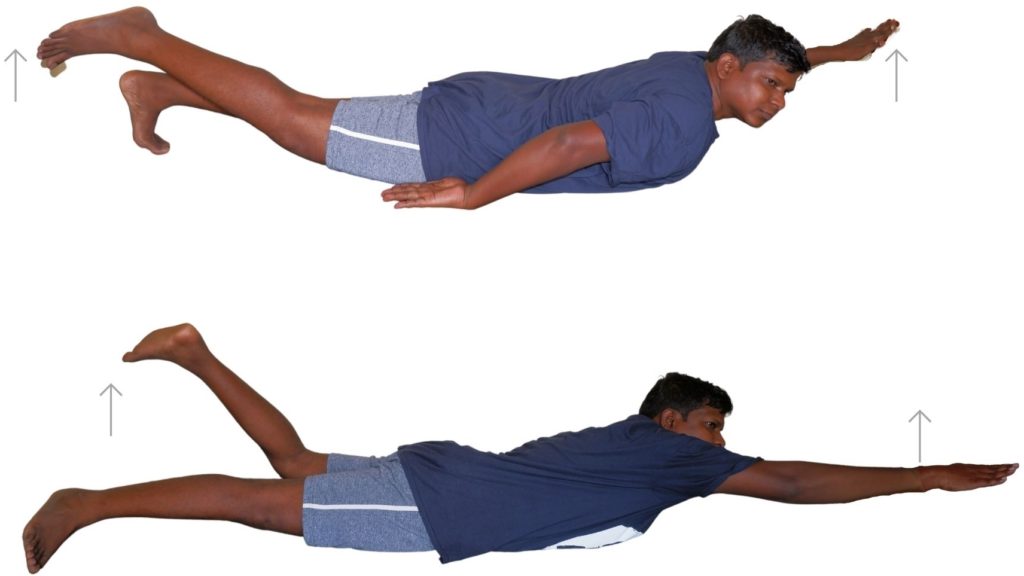
- For this exercise, stay in the same position as above; that is, you will be lying on your tummy with your hands on both sides.
- In this position, lift one leg and one opposite hand straight. For example, if you are lifting your left leg then simultaneously lift the right hand.
- Remember that when you lift the leg, you will not bend your knee; try to keep the knee as straight as possible.
- Hold this position for at least 5 seconds; as I said earlier, it would be better to count from one to five.
- After that, keep the foot slowly down and then raise the other leg like this and keep it old for 5 seconds.
- Repeat this process at least 20 times; that is, if you do it ten times in one leg, it becomes 20 times in one session.
#4 Hand & leg raise in quadruped exercise
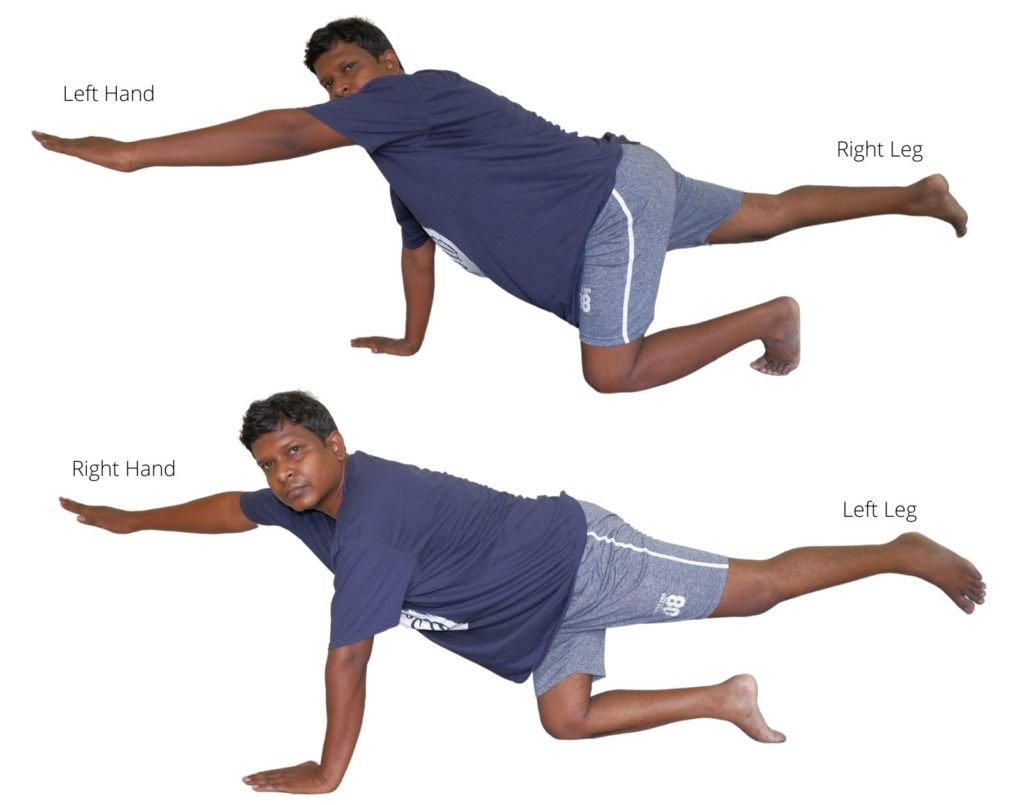
- Our starting position for this exercise will be the quadruped position. You will come to your knees and hands; we call this position a quadruped or prone kneeling.
- In this position, you will raise one arm and one leg straight. This means that if you are raising your right leg, you will lift your left hand.
- In doing so, remember that your knee and elbow will remain completely straight. Hold this position for about 5 seconds and then slowly come into the Relax position.
- In the same way, repeat this process on the other side, i.e., if you lift the right leg, then raise the left hand.
- Do this at least 20 times in a session and do two sessions a day.
#5 Cat and Dog Exercise
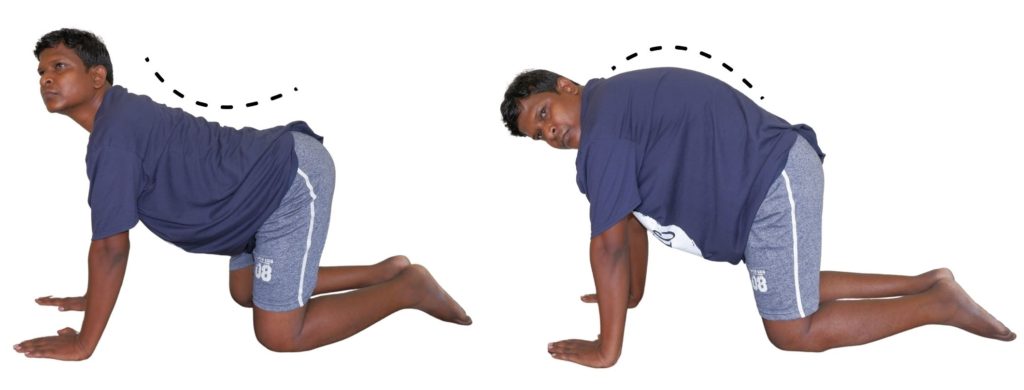
The name of the exercise may sound confusing, but it is straightforward. This exercise also has to be done in a quadruped position.
- So first, you will come in a quadruped position.
- Then curve your lower back upwards and tilt your head downwards to curve it up; we call it cat exercise.
- Then, vice versa, you will curve your lower back downwards; this time, you will lift your head upwards so that your lower back will form a downward curve; this is called dog exercise.
- Repeat this cat and dog position one after the other so that your lower back will be relieved of any stiffness if present.
- Repeat this exercise 15 to 20 times in a session and do it twice daily.
#6 Strengthening exercises by using a therapy ball
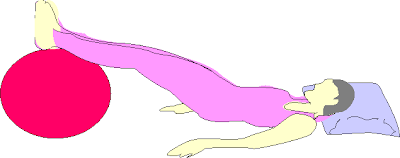
The same bridging exercise can be done using a therapy ball. Therapy ball is also called other names, such as exercise and gym ball. Utilising this ball makes the exercises more interesting and enjoyable. Several other back exercises can be done using this ball, which I have already covered in 6 Easy Gym Ball Exercises for Lower Back for Quick Relief.
For bridging exercise, lie on your back, keep your leg over the ball, and raise your waist. Raise it as high as possible and hold for 5 seconds. After 5 seconds, lower it down slowly. Repeat it 25 to 30 times in a session; however, the more you do, the better it is.
#7 Stretching exercises
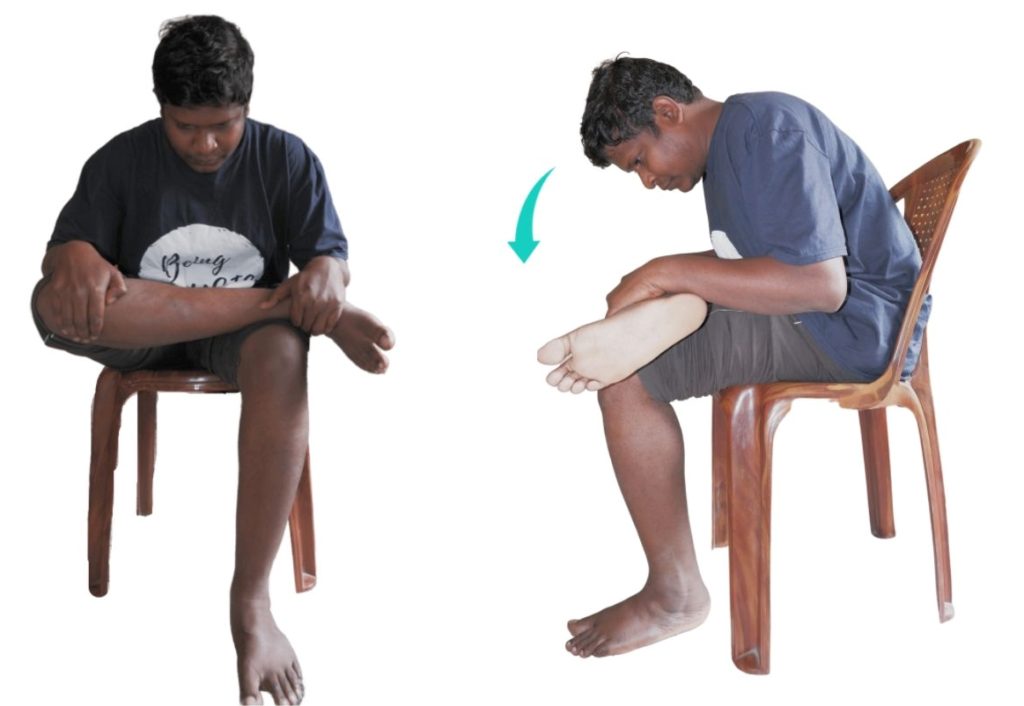
In chronic back pain, one of the most common muscles that gets stiff is the piriformis muscle. These are flat muscles present on the sides of our buttocks and are often ignored. There are several good exercises to stretch this muscle, which I have already covered in one of my articles 3 Easy Piriformis muscle stretch.
Here, I will describe one of the most common and straightforward exercises.
- For this exercise, you have to sit straight on a chair.
- To stretch the right side of the piriformis muscle, keep the right leg over the left thigh, as displayed in the figure.
- In this position, you must bend to a point where you will feel comfortable stretching on the side of your right buttock.
- Hold this position for 5 seconds and then come to the normal position.
- Repeat this 3 to 4 times in a single session on one side. Similarly, repeat the process on the other side.
How physiotherapy can help in chronic back pain
When you are referred to the physiotherapist, they will thoroughly evaluate the pain associated with the movement. Accordingly, they will choose the treatment plan that best fits their condition.
1: Rest during severe pain
Rest is essential during severe pain. During rest, apply hot fomentation over the back. When you go to a Physiotherapist, they will apply ultrasonic therapy and interferential therapy (IFT), which is very useful in pain-relieving. One can also use a portable IFT or TENS machine, which
2: After reduction of severe pain
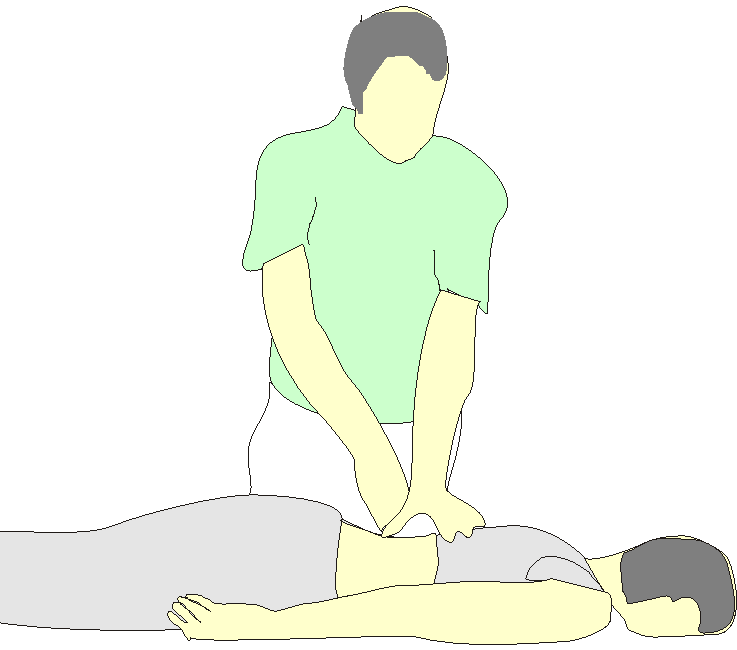
After reducing severe pain, your physiotherapist will do a series of stretching exercises. They will search for tender/painful spots and perform DTFM (Deep Transverse Friction Massage) over them.
Often, the tender spot will be at the interspinous ligament region.
Immediately after stretching and DTFM, the physiotherapist will give you ultra-sonic and
4: Lumbar traction
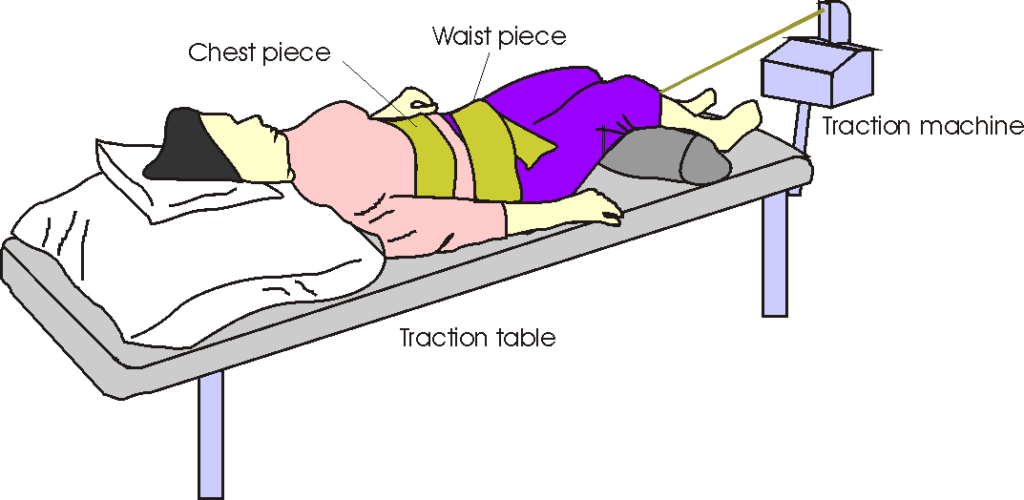
Lumbar traction is very effective if you have leg pain with low back pain. It is a technique in which a traction force is applied over the lower back using a traction machine.
This traction force creates a gap between the lumbar vertebral bone, which is otherwise reduced in conditions such as a bulging disc. To learn more about lumbar traction, please read my previous article, What is Lumbar Traction in Physiotherapy?
3: Posture correction
Correct posture is essential to prevent the recurrence of pain. In the above case I discussed in the introduction, he must sit straight, avoid bending the lumbar region while sitting, and practice the best way to sit at your desk.
In short, we should sit on desks so that there’s no bending in our neck and lower back. We should choose our chairs so that our lower back will get good support.
Final word
When working in front of the computer for long hours, if we adopt the wrong posture, it will increase pain and worsen the disc bulge. That is why we should learn to sit in the right way and adopt it. I have already discussed this in detail; you can read this article. In short, we should sit on desks so that there’s no bending in our neck and lower back. We should choose our chairs so that our lower back will get good support.
Usually, conservative management gives excellent results, but if pain continues to appear, consult your physician.
Also read: Effective chronic pain treatment using sound & electrical stimulation possible| Study
Frequently Asked Questions (FAQs) on Chronic Low Back Pain and Exercises:
The author is a physiotherapist who has been practising for the last 17 years. He holds a Bachelor's in Physiotherapy (BPT) from SVNIRTAR (Swami Vivekananda National Institute of Rehabilitation and Research), one of the prestigious physiotherapy schools in India.
Whatever he learns dealing with his patient, he shares it with the world through blogs and e-books. He also owns a YouTube channel, "Sunit Physiotherapist" with over 8 lakh active subscribers. Here, he shares everything he gets to learn serving the patient.
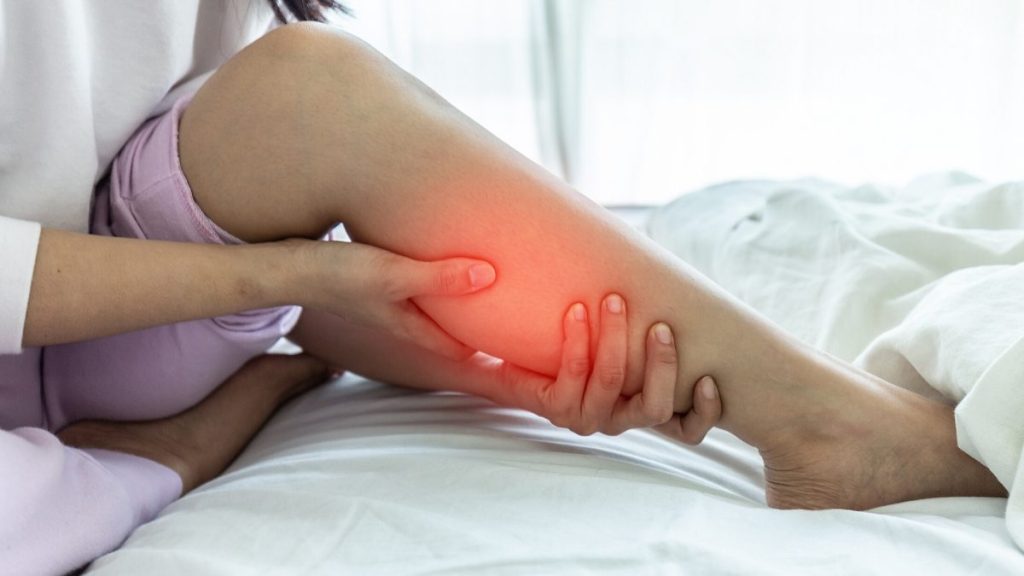
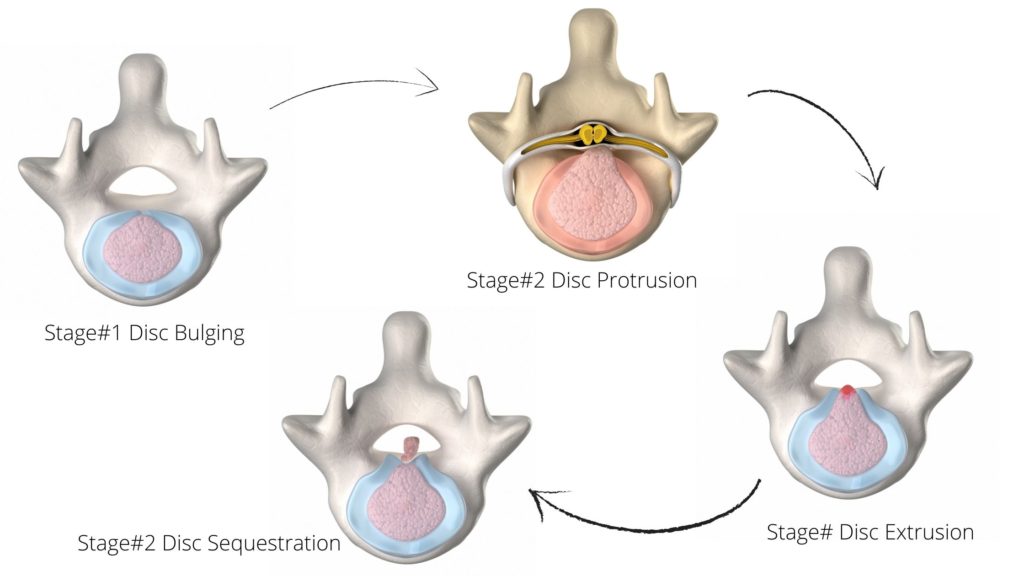
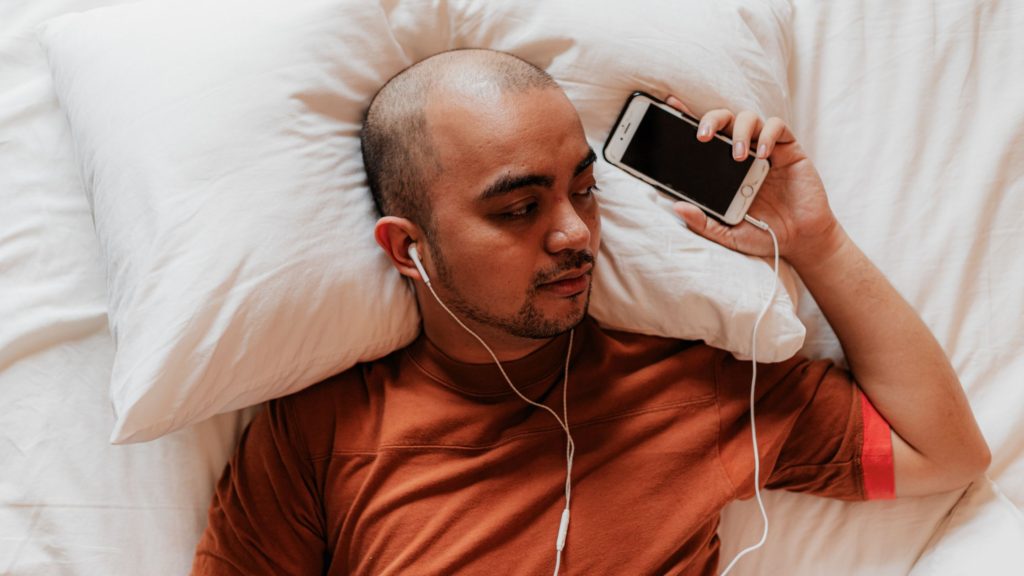


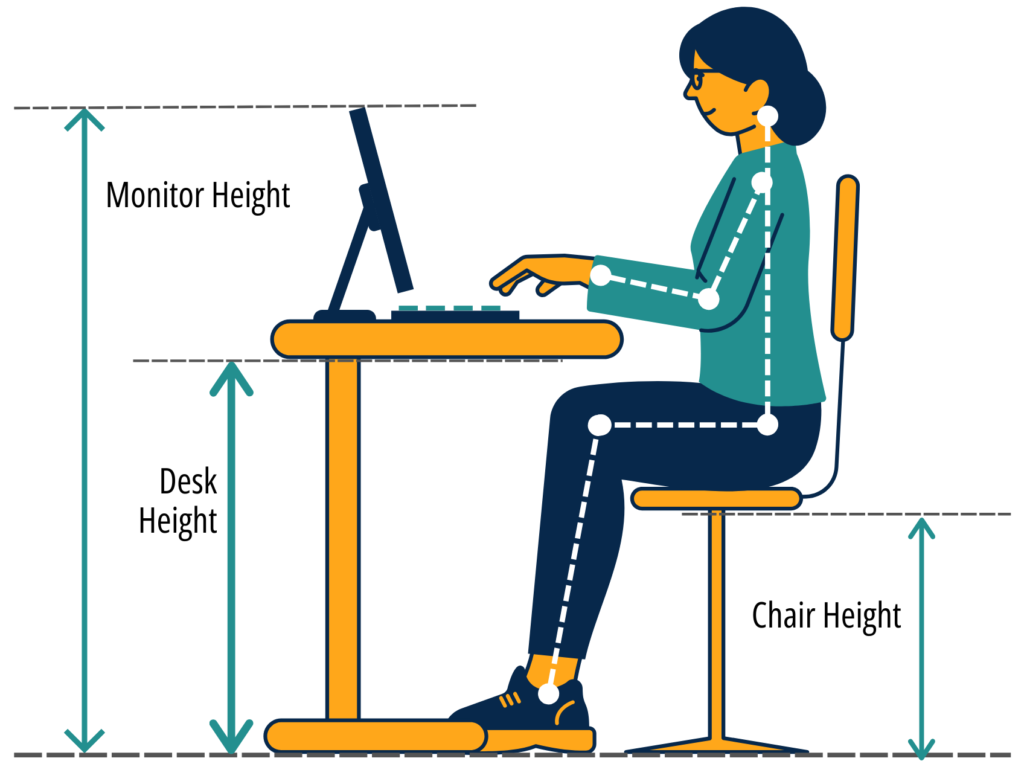
Pingback: 4 Best Sleep Position for Low Back Pain Relief - Physiosunit
Pingback: 7 Easy Low Back Stretches for Back Pain Relief - Physiosunit
Pingback: Short wave diathermy/SWD: Uses, indications, contraindications : Physiosunit
Pingback: How to Recover Muscles Faster after Workout? : Physiosunit
Pingback: How long will it take to heal a torn ligament? : Physiosunit
Pingback: What's Infrared in Physiotherapy, When & How to Use : Physiosunit
This writing has instilled a certain confidence in the audience.
marijuana shatter prices
thnx
nice
Great post. This article is really very interesting and enjoyable. I think its must be helpful and informative for us. Thanks for sharing your nice post. Exeter chiropractic